French Locks
French box locks manufactured during the eighteenth and nineteenth century are generally very simple mechanically speaking; many rely on, if not just one, only a few internal levers. The mechanism initially locks with one full anti-clockwise turn of the key but, unlike British locks, can then turn a further 360 degrees to essentially ‘double lock’ itself. The design of the internal lock bolt catered for this double throw action by having an elongated bolt arm. The reason for this double locking action is somewhat of an enigma as it doesn’t seem to enhance the overall security of the lock; one is left to speculate that it may serve to complicate and lengthen the work of the illegal lock picker.
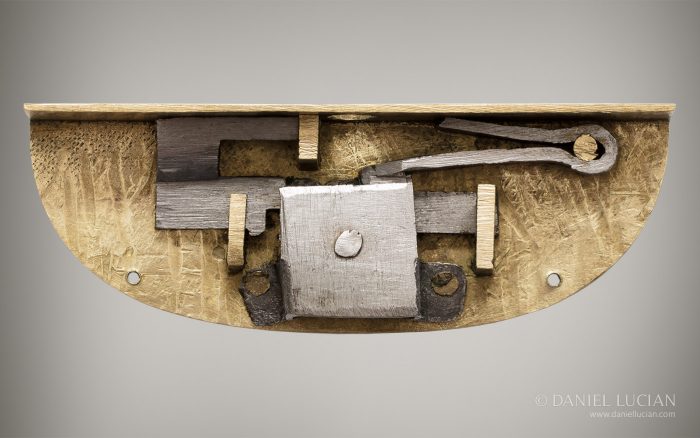
An 1820’s French lock taken from an antique travelling box in Cuban mahogany. Note the elongated bolt arm (top left) to allow for the mechanism’s double throw action.
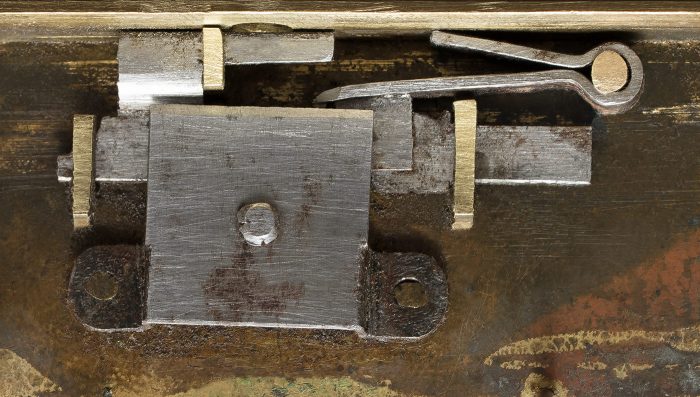
An 1820’s French lock in its ‘double locked’ position. Note the elongated bolt arm (top centre) to allow for the mechanism’s double throw action.
The addition of a ‘curtain’ (a revolving metal keyhole sheath that prevents multiple lock picking tools gaining access to the levers) and unusually shaped drill pins help make these locks extremely hard to open without their characteristic keys, adding certain complication for any lock picker or locksmith with the unenviable task of key duplication. Drill pins in the shape of a heart, triangle, star, (playing card) spade, and cloverleaf have been known to be fitted to these French locks.
Made significant by its usage on the magnificent 1787 and 1791 French ’Nécessaire de Voyage’ boxes commissioned by Marie Antoinette, the cloverleaf shaped drill pin is believed to symbolise the Christian holy trinity.
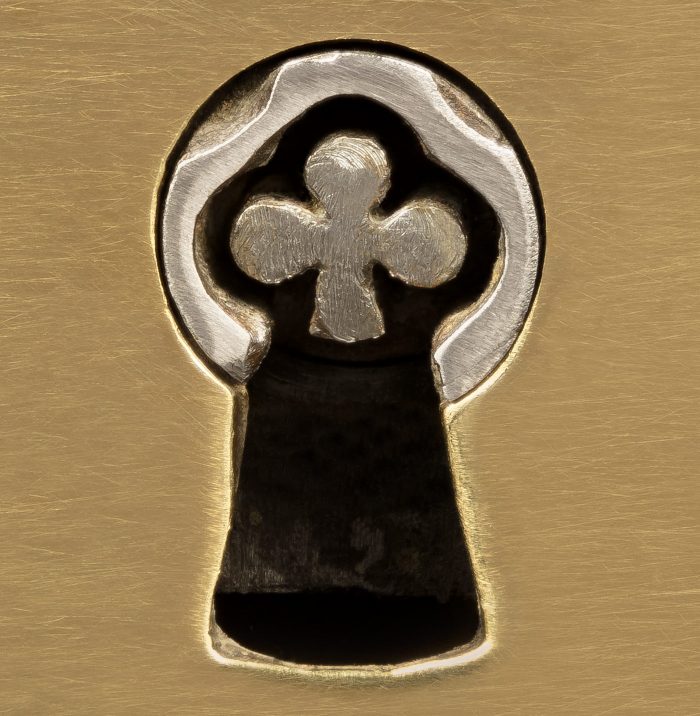
1806 French double action lock with cloverleaf (tréfle) shaped drill pin and surrounding curtain from an antique jewellery box in Cuban mahogany, by Georges Monbro.
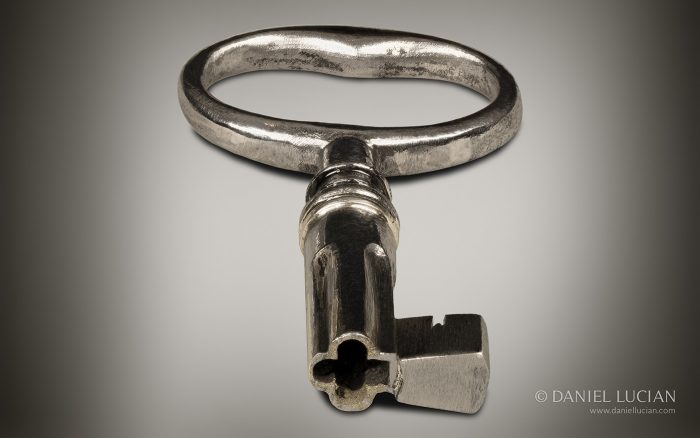
French antique key with a cloverleaf (tréfle) shaped shaft.
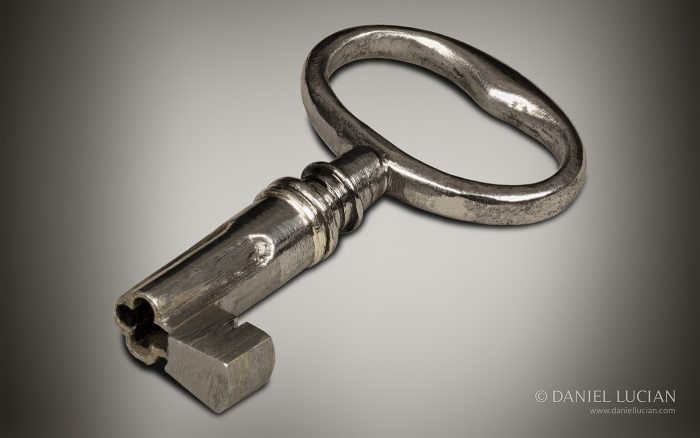
French antique key with a cloverleaf (tréfle) shaped shaft.
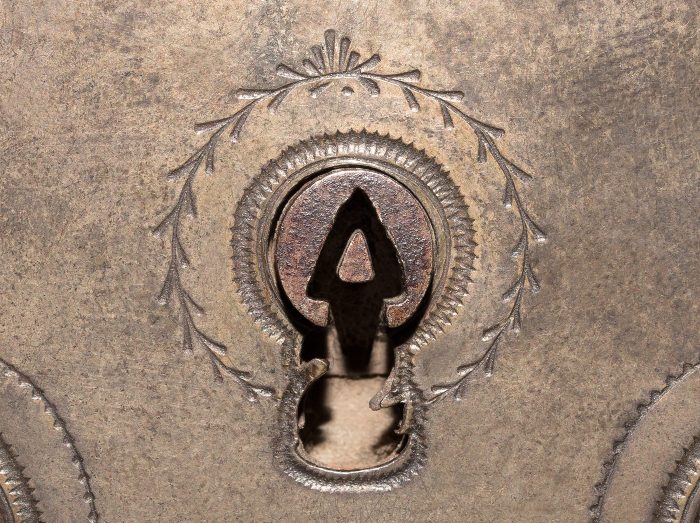
1789 French lock with triangular shaped drill pin and surrounding curtain. Note the small prongs to the edges of the key hole; this requires a ‘Z’ shaped key bit to pass through it.
French lock fittings are externally recognisable by their cylindrical links to the top link plate and circular entry points to the main lock housing. These attributes, though subtle, weren’t found on British boxes which instead had cuboid links to the top link plate and rectangular entry points to the main lock housing.
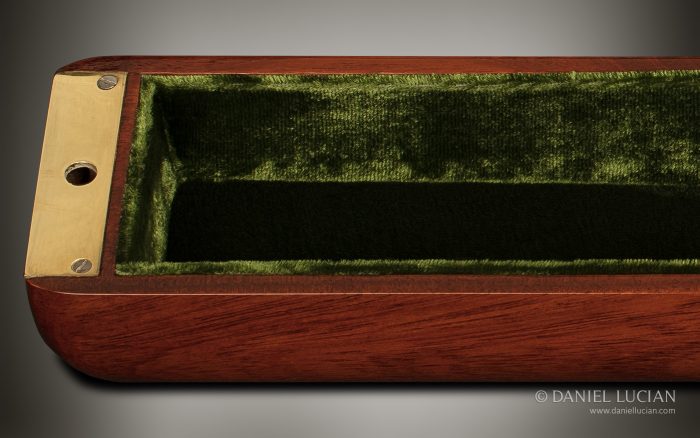
Circular entry point to a French lock housing. The cylindrical link from the link plate engages here.
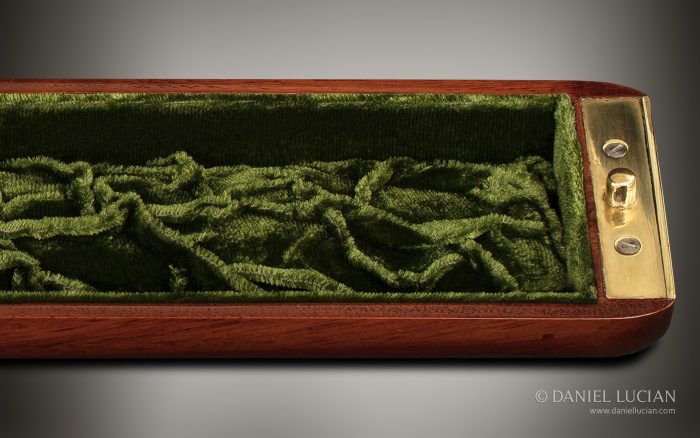
Cylindrical link on the top link plate.
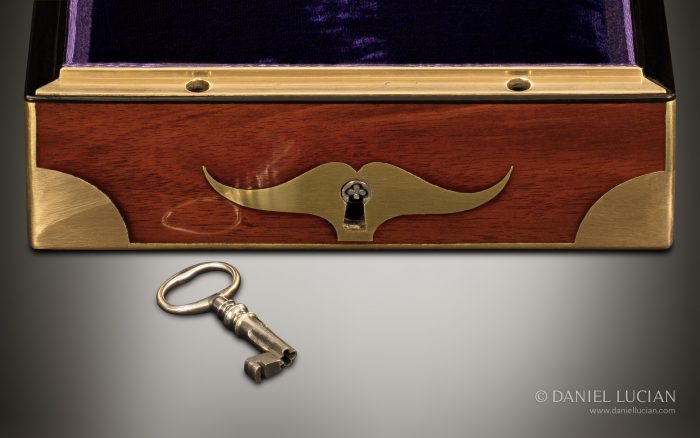
Circular entry points to the lock housing, and a cloverleaf (tréfle) shaped lock drill pin and key from a French antique jewellery box in palisander wood.
It wasn’t uncommon for some French boxes to be fitted with English Bramah patent or Chubb locks, but their inclusion necessitated the customisation of the link plates and lock entry points accordingly.
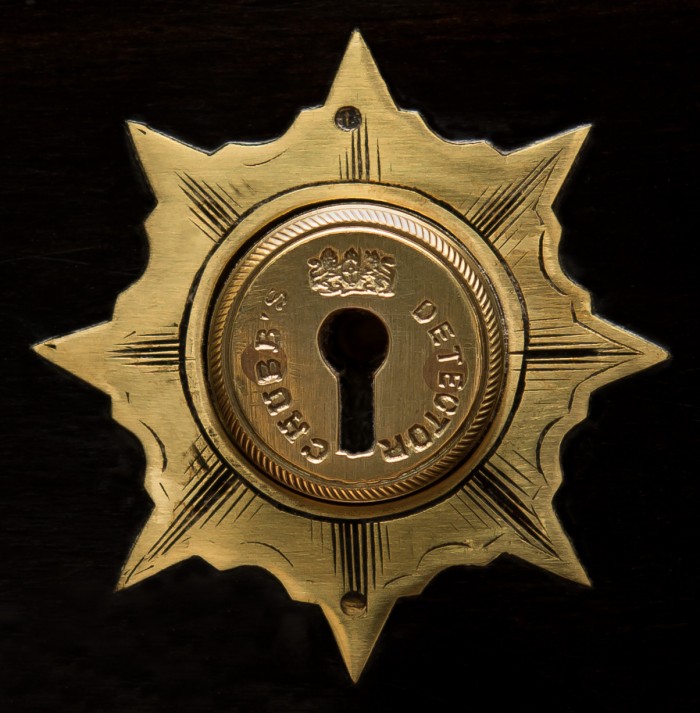
Chubb Dectector lock from a French antique nécessaire de voyage dressing case in ebony with floral brass inlay by Aucoc Ainé à Paris.
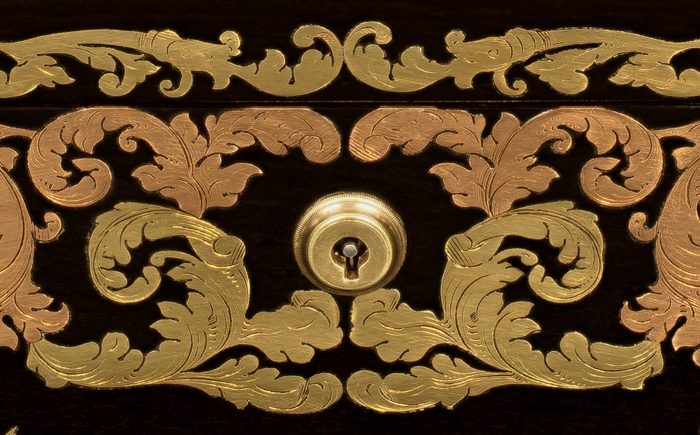
Bramah patent lock from a French antique jewellery box in ebony with yellow and rose brass inlay.
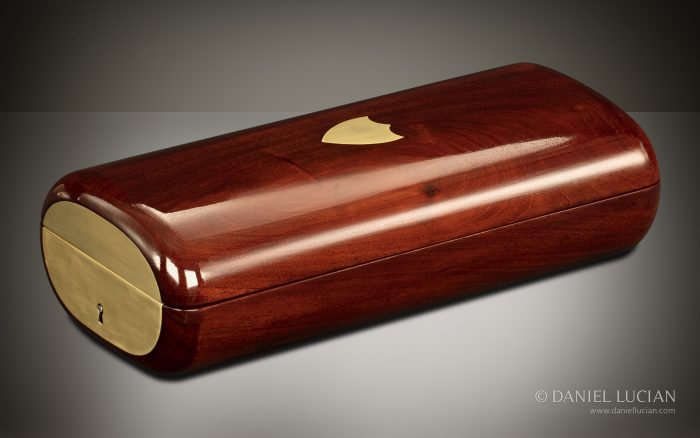
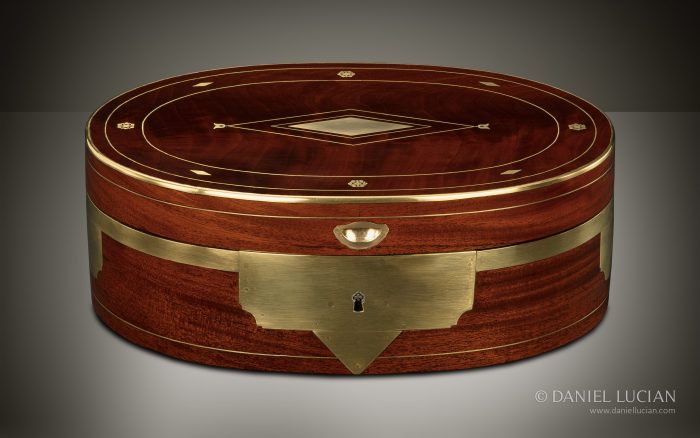
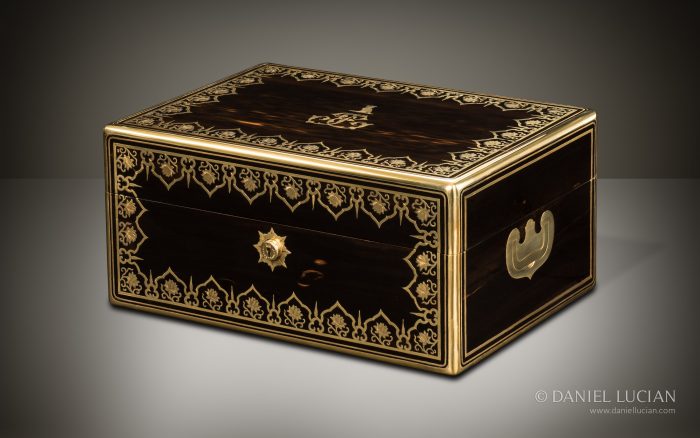

 Price On Application
Price On Application